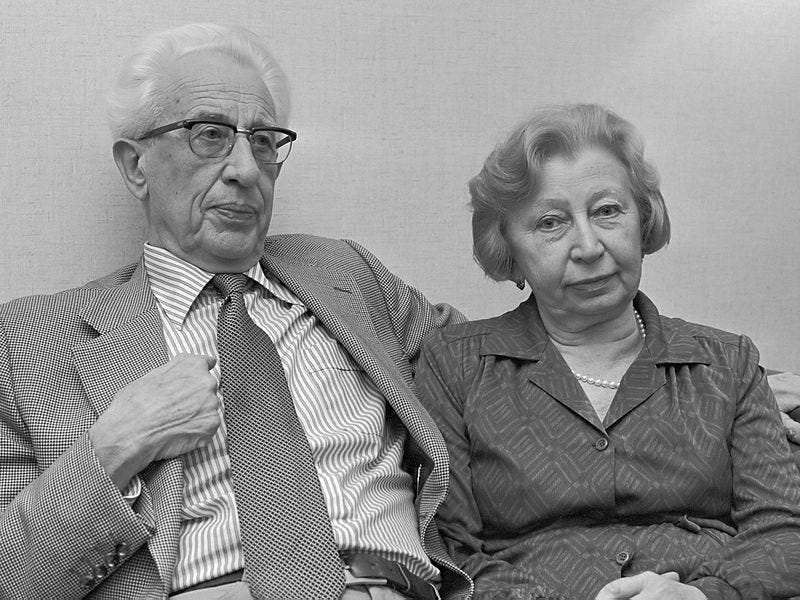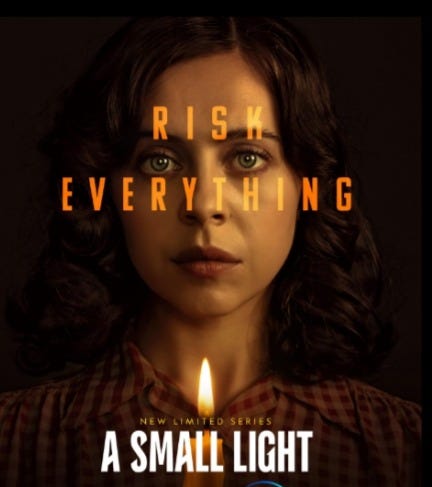Another quantum paper (I know, I said I wouldn’t)
Plus: a must-see miniseries and a petition for the criminalization of ecocide
Having recently sworn to myself that I wouldn’t write about quantum mechanics again, I did just that. Here is the link to the PDF, and here is the link to arXiv’s new (experimental) HTML/web page.
Those interested in my quantum exploits may remember the two points I kept making ad nauseam:
The contextuality of the properties of quantum objects does not countenance the elision of the thinking and perceiving subject, i.e., the possibility of “stepping back into the role of a non-concerned observer,” as Schrödinger put it. If quantum objects owe their properties to the experimental conditions in which they are observed, the experimental apparatus cannot owe its properties to the quantum objects of which it is commonly said to be composed. This means that neither atoms and subatomic particles nor measuring instruments can be regarded as property-carriers that exist independently of conscious subjects.
The difference between the classical domain (containing objects which are directly accessible to sensory experience) and the quantum domain (containing objects which are at best indirectly accessible to sensory experience) is essentially the difference between the manifested world and what is instrumental in its manifestation. I envisioned the (atemporal) process of manifestation as a progression from the undifferentiated unity of a single ontological substance to a world which allows itself to be described in the plain language of everyday discourse. Subatomic particles, non-visualizable atoms, and partly visualizable molecules, instead of being constituent parts of the manifested world, mark the stages of this progression.
It struck me only recently that I have so far failed to highlight the intimate connection between these two ideas. If the manifestation of the empirical world begins with a single ontological substance, then both quantum objects and measuring instruments owe their existence to this substance. (Here “substance” is used in its Aristotelean sense, which contrasts substances with properties: while a substance exists in itself, a property only exists if it is possessed by a substance. Properties owe their existence to the substances that possess them.)
But if both quantum objects and measuring instruments owe their existence to one and the same substances, then the elision of the subject can be achieved, at least to the extent it was achieved by Kant. (Having asserted that “we can have cognition of no object as a thing in itself, but only insofar as it is an object of sensible intuition, i.e., as an appearance,” Kant went to affirm that “even if we cannot cognize these same objects as things in themselves, we at least must be able to think them as things in themselves. For otherwise there would follow the absurd proposition that there is an appearance without anything that appears.”)
Earlier I went with Schrödinger’s explanation of why we all seem to experience one and the same world: because we (as subjects) “are all really only various aspects of the One.” The Vedantic unity of Self and Substance, or the fact that the One is not only a single Self experiencing the world from different vantage points but also a single Substance constituting a multitude of objects, helps explain how subjects fit into a world of objects, but it also distracts if all we want to show is how, in the face of quantum contextuality, we can keep our thinking and perceives selves out of the picture and pretend to be experiencing a self-existent world.
Recently I watched a beautiful and deeply moving miniseries, which I cannot recommend highly enough. Titled A small light, it is the story of Miep Gies. Austrian by birth, Miep was taken in as a foster child by a Dutch family in Leiden, to whom she became very attached. Although she was only supposed to stay for six months, she chose to remain with them, living the rest of her life in the Netherlands. In 1933 she began work as a secretary with the Dutch branch of the German spice firm Opekta.
It is also the story of the Frank family. Otto Frank had just relocated from Germany, having been appointed managing director of Opekta’s Dutch operations. Gies, Frank’s employee, became a close friend of the family, as did her fiancé, Jan Gies. After refusing to join a Nazi women’s association, her passport was invalidated, and she was ordered to be deported back to Austria (by then annexed by Germany). By getting married to Jan in July 1941, she was able to obtain Dutch citizenship and thus to evade deportation.
With her husband and other Opekta employees, Miep Gies helped hide Otto and Edith Frank; their daughters Margot and Anne; Hermann, Auguste and Peter van Pels; and Fritz Pfeffer in several upstairs rooms in the company’s office building on Amsterdam’s Prinsengracht from 6 July 1942 to 4 August 1944.
Before the hiding place was emptied by the authorities, Gies and another secretary retrieved parts of Anne Frank’s diaries and saved them in their desk drawer. Gies was determined to give them back to Anne. After the war had ended and it was confirmed that Anne Frank had perished in the Bergen-Belsen concentration camp, Gies gave the collection of papers and notebooks to the sole survivor from the Secret Annex, Otto Frank. After transcribing sections for his family, Frank was persuaded of the value of Anne’s account of their ordeal and arranged for the book’s publication in 1947. Miep Gies did not read the diaries before turning them over to Otto and later remarked that if she had, she would have had to destroy them because the papers contained the names of all five of the helpers as well as of their black-market suppliers. She was persuaded by Otto Frank to read the diary in its second printing.
The title of the series comes from a quote by Gies, which reads: “I don’t like being called a hero because no one should ever think you have to be special to help others. Even an ordinary secretary or a housewife or a teenager can turn on a small light in a dark room.”
Miep Gies received many awards. She died in 2010, aged 100.
I am presently listening to The Diary of a Young Girl by Anne Frank, read by Helena Bonham Carter, who played Nicholas Winton’s Mother in One Life. This audio experience benefits greatly from having watched A small light.
And finally, a request. It is known to virtually everyone that June 6, 2024, was the 80th anniversary of D-Day. It is much less widely known that it was also the first anniversary of the destruction of the Kakhovka hydroelectric dam in 2023, one of the largest (if not the largest) man-made ecological disaster.1 The dam was under the control of the Russian military, which had seized it in the early days of the Russian invasion of Ukraine. Many experts have concluded that Russian forces blew up a segment of the dam to hinder the planned Ukrainian counter-offensive. Thousands of people were displaced by flooding from one of the world’s largest reservoirs, which was vital for irrigating farmland considered the breadbasket of Europe. The disaster put global food supplies for millions at risk and threatened fragile ecosystems for decades. According to local health workers from Oleshky, the death toll was in the hundreds from that city alone, with shallow mass graves dug for the victims. Flooding killed many animals and damaged farmland, homes, businesses, and infrastructure.
Ecocide needs to be designated a war crime. Because the International Criminal Court does not recognize ecocide as an international crime, ecological destruction goes unpunished. To help nature get justice, please visit and share Stop Ecocide International and sign the petition. Together with a growing global network of lawyers, diplomats, and across all sectors of civil society, Stop Ecocide International is working towards making ecocide an international crime.
See also:
Wilson Center: The Kakhovka Dam Disaster: Responsibility and Consequences
US Mission to the OSCE: The Destruction of Ukraine’s Kakhovka Dam and Hydroelectric Power Plant
The Conversation: Kakhovka Dam breach in Ukraine caused economic, agricultural and ecological devastation that will last for years






You are the type of person who NEEDS to watch this documentary and see for yourself, its not Voodoo or woo woo, our thoughts create our reality. I've studied this since 2017
If you or anyone else wants another look at quantum physics in a way you may never imagined, then you need to watch this coming up soon SourceTheFilm.org its free to watch June 21 to June 23